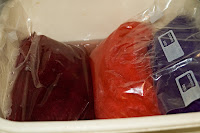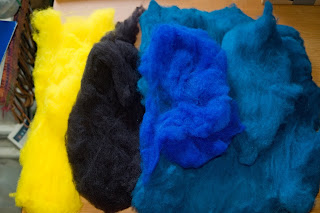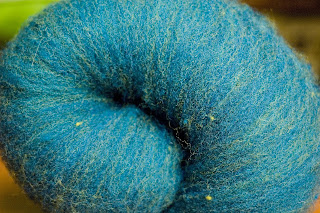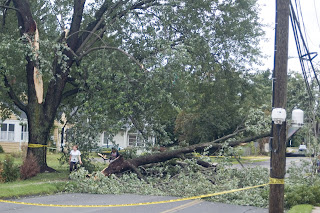While you can't rightly say that hurricanes are predictable, these days we usually get some warning that one is approaching. For people in hurricane prone areas this is the signal to start prepping, and
because this is a common occurrence, they probably make a habit of staying stocked up on certain non-perishables or property-protecting "stuff" like plywood and extra duct tape.
That's not me. I live in CT for Pete's sake - how often do we get really threatening hurricanes up here? And this one has the temerity to make itself known at the
end of the month, when I have no money left. Hence my need to figure out what I can do with what I have.
We're more likely to be dealing with extended power outage than any of the other myriad disaster-related issues- even if we do get flooding there won't be much we can do about it besides making sure there's nothing important on the cellar floor, and that the sump-pump is plugged in.
We're currently set with everyone's meds, and we have a cell phone and a portable DVD player (critical for getting Scarlett to go to sleep). Our stove is gas, and our water isn't dependent on electricity either, so our biggest problem will be light. We have a couple of candles and a cheap flashlight, but nothing that would provide continuous light for days (worst case scenario). Fortunately that's one thing I can jury-rig with what I have on-hand!
Enter the Makeshift Olive Oil Lamp. These are really useful in emergencies because not only do they use a fuel you're likely to have on-hand, but because olive oil is not as flammable as classic lamp oil, if the lamp gets knocked over the oil will extinguish the flame rather than starting a fire. This quality especially is important in a house with jumping children and cats! If you're not someone who regularly illuminates with fire, I think it's an important safety margin.
I'd seen these lamps online (
Lehman's carries a line of them), and had a good idea of what I needed: a heat-resistant glass container, some fairly stiff wire, 100% cotton string for the wick, and olive oil. For my experimental model I used a small custard cup. If we need more, I'll use canning jars- they are heat resistant and I have plenty of them. With an olive oil lamp you want to have the top of the wick close to the surface of the oil, which shouldn't be more than 3/4" or so deep, even in a much larger jar.

I took some brass wire I had on hand and a pair of round-nosed pliers, cut off maybe 6-8 inches of wire, and made a little corkscrew about .5" long in one end to hold the wick.

I then bent the rest of the wire at a right-angle to the corkscrew and curved it into a large, loose spiral. This wick holder will sit at the bottom of the "lamp." If I'd used a jar, I would've used a longer piece of wire and made a "handle" by bending it in another right angle to the loose spiral, so that both the corkscrew and the "handle" point straight up when the loose spiral is sitting flat. This will allow you to lift the wick holder out of the jar so you can light it.


The last piece was the wick. I had some 100% cotton rug warp left from a weaving project, but I knew it would be too thin as it was. I took a length about 16" long and twisted it with one hand until it started to kink up. I then carefully folded this in half (a helper might reduce frustration by keeping the string taut while you do this), then repeated this process once more.
My string was now 1/4 as long, and 4x thicker - perfect! If you don't happen to have cotton rug warp on hand, you could substitute cotton kitchen string, unwaxed candle wicking, or a length of cotton shoelace (if you're not sure what your shoelaces are made of, do a
burn test first). In fact, any of these would have been preferable, and I would have used one of them if I'd had any - these items are all thicker, and the twisting & folding might not have been necessary.
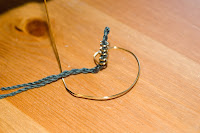
I threaded the wick through the corkscrew, leaving about 1/8 inch exposed at the top, and the tail loose.

This whole assembly is set in the bottom of your container. Add olive oil to about the first coil at the top of the wick holder, and you're good to go!
So here's my finished oil lamp! The flame from this wick is about what you'd get from a candle, and if I fill the oil to the first coil on the corkscrew, it will burn for several hours before it needs to be refilled.
 The same thing happens in reverse all the time - you see some knitting with colors that you love, then see the yarn it was knitted with, and think "I would never have pictured this yarn coming out like that!"
The same thing happens in reverse all the time - you see some knitting with colors that you love, then see the yarn it was knitted with, and think "I would never have pictured this yarn coming out like that!" In this second example the colors are much more closely related, both in hue and value. Here, you don't get strong stripes so much as a subtle shading.
In this second example the colors are much more closely related, both in hue and value. Here, you don't get strong stripes so much as a subtle shading.



















